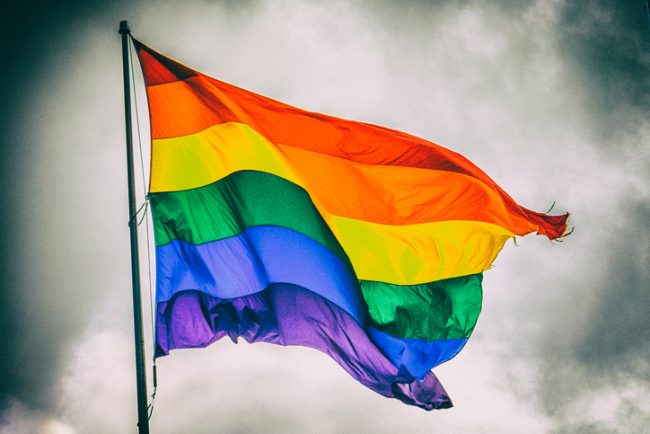LGBTQ adolescents are more likely than other kids their age to try to kill themselves, a new analysis confirms.

Data pooled from 35 earlier studies show that sexual minority youth were more than three times as likely to attempt suicide as heterosexual peers, researchers report in JAMA Pediatrics.
Transgender youth were at highest risk, nearly six times as likely to attempt suicide as heterosexual peers, researchers reported.
“Adolescents facing ‘non-conventional’ sexual identity are at risk of higher self-threatening behaviors, independent of bullying and other risk factors,” said the study’s lead author, Dr. Ester di Giacomo, a researcher in psychiatry at the University of Milano-Bicocca, in Italy. “I think that a difficulty in self-acceptance and social stigmatization might be keys for understanding such elevation in the risk of self-threatening behaviors.”
READ MORE: Transgender students in Bowmanville condemn Ontario’s decision to roll back sex-ed curriculum
Many LBGTQ youth have trouble accepting who they are because of the way they are seen by others, di Giacomo explained in an email.
Suicide is the second leading cause of death in adolescents, di Giacomo and her colleagues noted. A host of factors can raise the risk that teens will try to kill themselves, including psychiatric illness, bullying, and childhood abuse and trauma. Added to that can be sexual orientation.
The 35 studies in the analysis involved a total of nearly 2.4 million heterosexual youth and 113,468 sexual minority youth, ages 12 to 20, from 10 countries.
WATCH: LGBTQ youth are ‘coming out’ earlier than before

Overall, sexual minority youth were 3.5 times as likely to attempt suicide as heterosexual peers. Transgender adolescents were 5.87 times more likely, gay and lesbian adolescents were 3.71 times more likely and bisexual youth were 3.69 times more likely than heterosexual peers to attempt suicide.
The big advantage of this kind of study is that “in combining information across so many prior studies you’re really getting at one of the best estimates of the disparity of suicide risk due to sexual orientation,” said Brian Mustanski, director of the Institute for Sexual and Gender Health and Well Being at Northwestern University’s Feinberg School of Medicine in Chicago. “We already knew (LBGT) teens were at risk, but this study gives a more precise estimate of that risk.”
WATCH: Nova Scotia’s Liberal government to ban conversion therapy for LGBTQ youth

Mustanski has followed a group of young people for over a decade. He has found that the accumulation of experiences with victimization and bullying can lead to depression and feelings of hopelessness. “And those increase the risk for suicide,” said Mustanski who was not affiliated with the new study.
In a recent study, Mustanski and his colleagues found that having a romantic relationship can be protective against the negative effects of bullying. “If (teens) were bullied but they had a romantic partner, they didn’t have depression like those who didn’t have a romantic partner,” he said. “Having positive family relationships and parental support promotes positive mental health, but it doesn’t take away the effects of bullying like a romantic relationship does.”
READ MORE: Doug Ford reverting Ontario back to 1998 sex-ed curriculum is ‘dangerous’ for kids, experts say
While the outside world can have a negative impact, there are factors that can ameliorate it, said Dana Rofey, an associate professor of psychiatry and pediatrics at the Children’s Hospital of Pittsburgh at the University of Pittsburgh Medical Center. “There are protective factors, such as having support from the family, a safe school environment, and a safe and supportive work environment as well as access to psychological and medical care,” Rofey said.
Rofey points to an article published in Pediatrics that looked at measures of anxiety and depression in transgender children. Researchers in that study found that children who were supported and allowed to live openly in their “opposite” gender weren’t more anxious or depressed than other children.
While the new study underscores the increased risk of suicide attempts in sexual minority youth, “it’s important to understand not all LGBTQ teens are suicidal,” Mustanski said. “We read about this community being at risk, but there are plenty of LGBTQ teens who are happy and thriving and doing great.”
Where to get help
If you or someone you know is in crisis and needs help, resources are available. In case of an emergency, please call 911 for immediate help.
The Canadian Association for Suicide Prevention, Depression Hurts and Kids Help Phone 1-800-668-6868 all offer ways for getting help if you, or someone you know, is suffering from mental health issues.
- Invasive strep: ‘Don’t wait’ to seek care, N.S. woman warns on long road to recovery
- Canadian man dies during Texas Ironman event. His widow wants answers as to why
- ‘Super lice’ are becoming more resistant to chemical shampoos. What to use instead
- ‘Sciatica was gone’: hospital performs robot-assisted spinal surgery in Canadian first



Comments